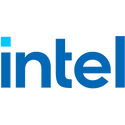
Creative Announces Super X-Fi Gen 4 Audio Profile
Building on the foundation of its award-winning Super X-Fi Headphone Holography, Creative Technology will be unveiling the all-new Super X-Fi Gen 4 audio profile. This latest release boasts significant enhancements in dynamic range, clarity, and spatial awareness. The Super X-Fi Gen 4 isn't just raising the bar; it's redefining the standard for immersive audio experiences. With this latest update, users can enjoy an expanded dynamic range, delivering richer, more detailed audio reproduction. Coupled with improved clarity, users can indulge in crystal-clear sound that captures every subtle nuance, while the refined sense of space offers a more expansive and lifelike soundstage.
Super X-Fi technology elevates the audio experience for users by recreating the immersive soundstage of high-end surround speaker systems within headphones, further personalized by the power of Artificial Intelligence (AI) for a remarkably natural listening experience. Since its debut at CES 2019, users and critics have been impressed by the realism of personalized audio, which is tailored according to their anthropometric profiles. From immersing in the heart-pounding action of a blockbuster movie to feeling the raw energy of a live concert or delving into the captivating world of gaming, Super X-Fi can bring it all to life with breath-taking detail and precision.
Super X-Fi technology elevates the audio experience for users by recreating the immersive soundstage of high-end surround speaker systems within headphones, further personalized by the power of Artificial Intelligence (AI) for a remarkably natural listening experience. Since its debut at CES 2019, users and critics have been impressed by the realism of personalized audio, which is tailored according to their anthropometric profiles. From immersing in the heart-pounding action of a blockbuster movie to feeling the raw energy of a live concert or delving into the captivating world of gaming, Super X-Fi can bring it all to life with breath-taking detail and precision.


























































